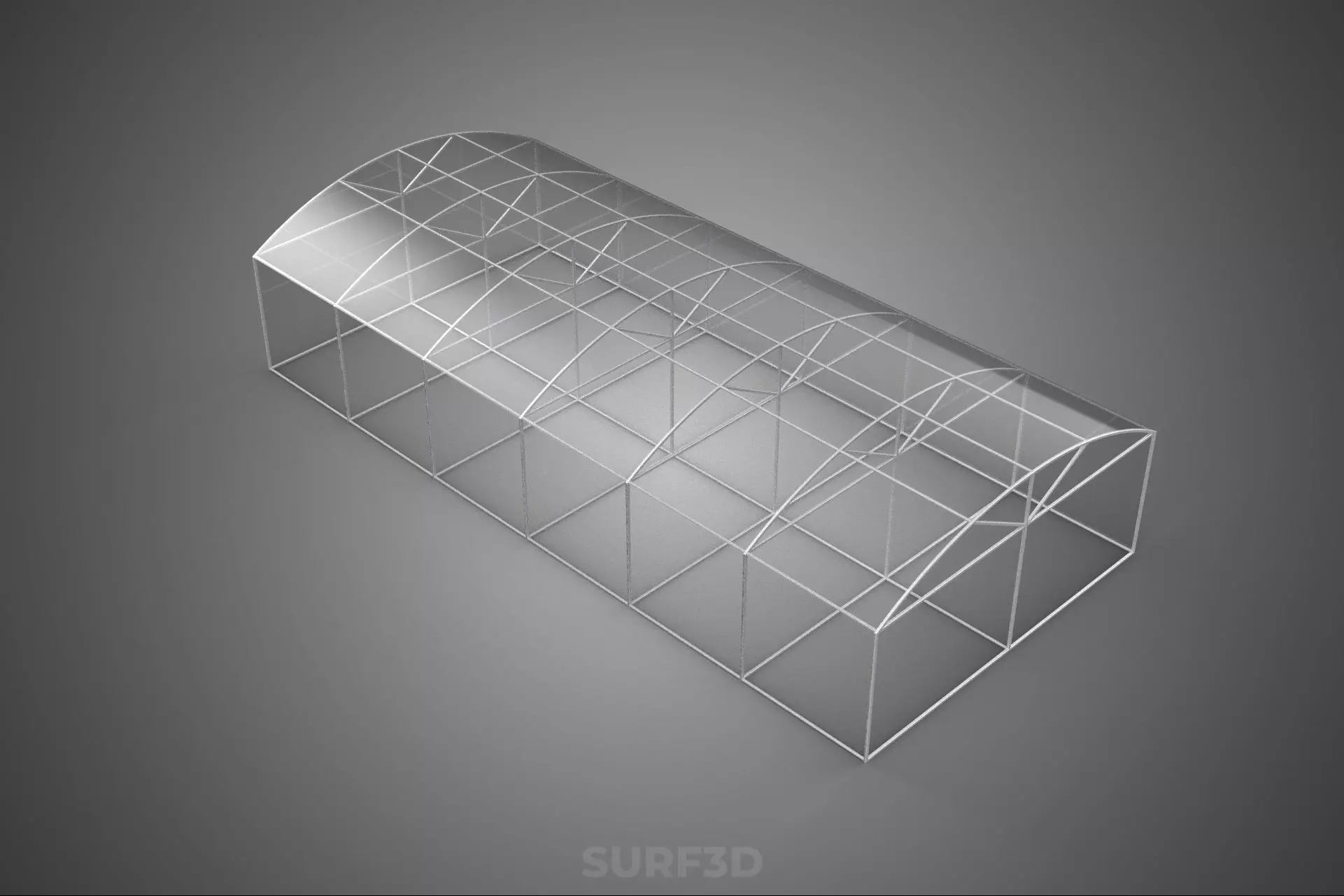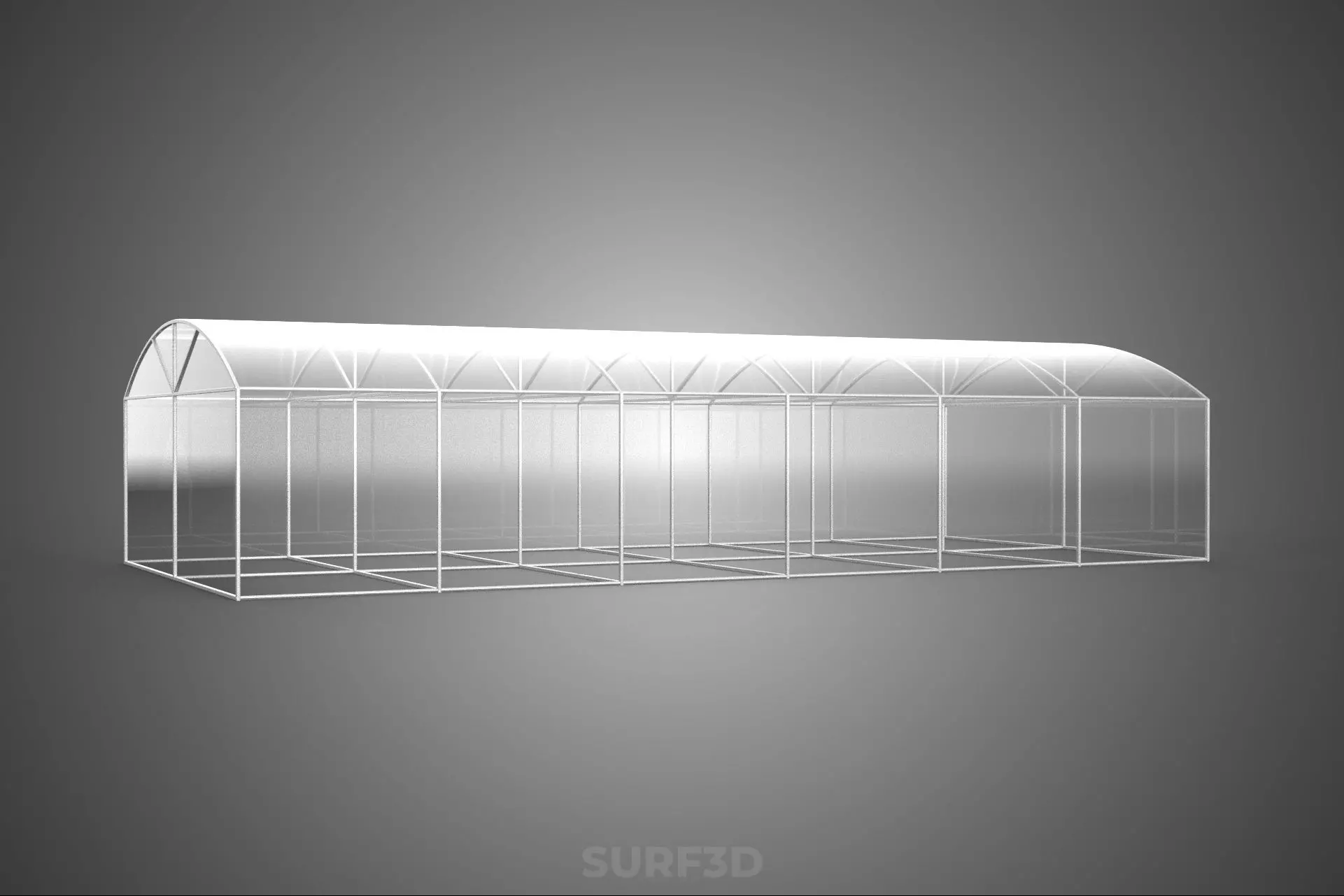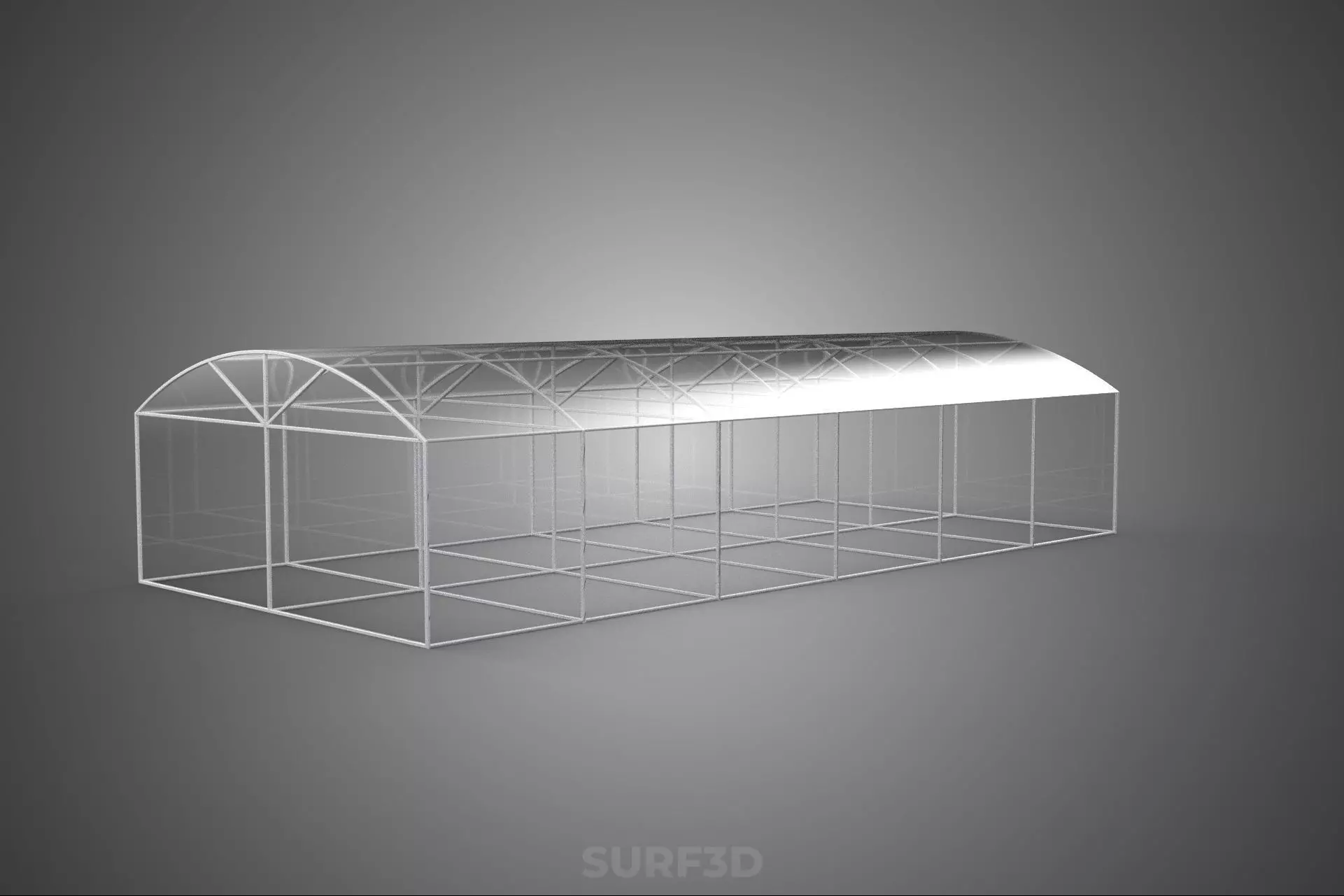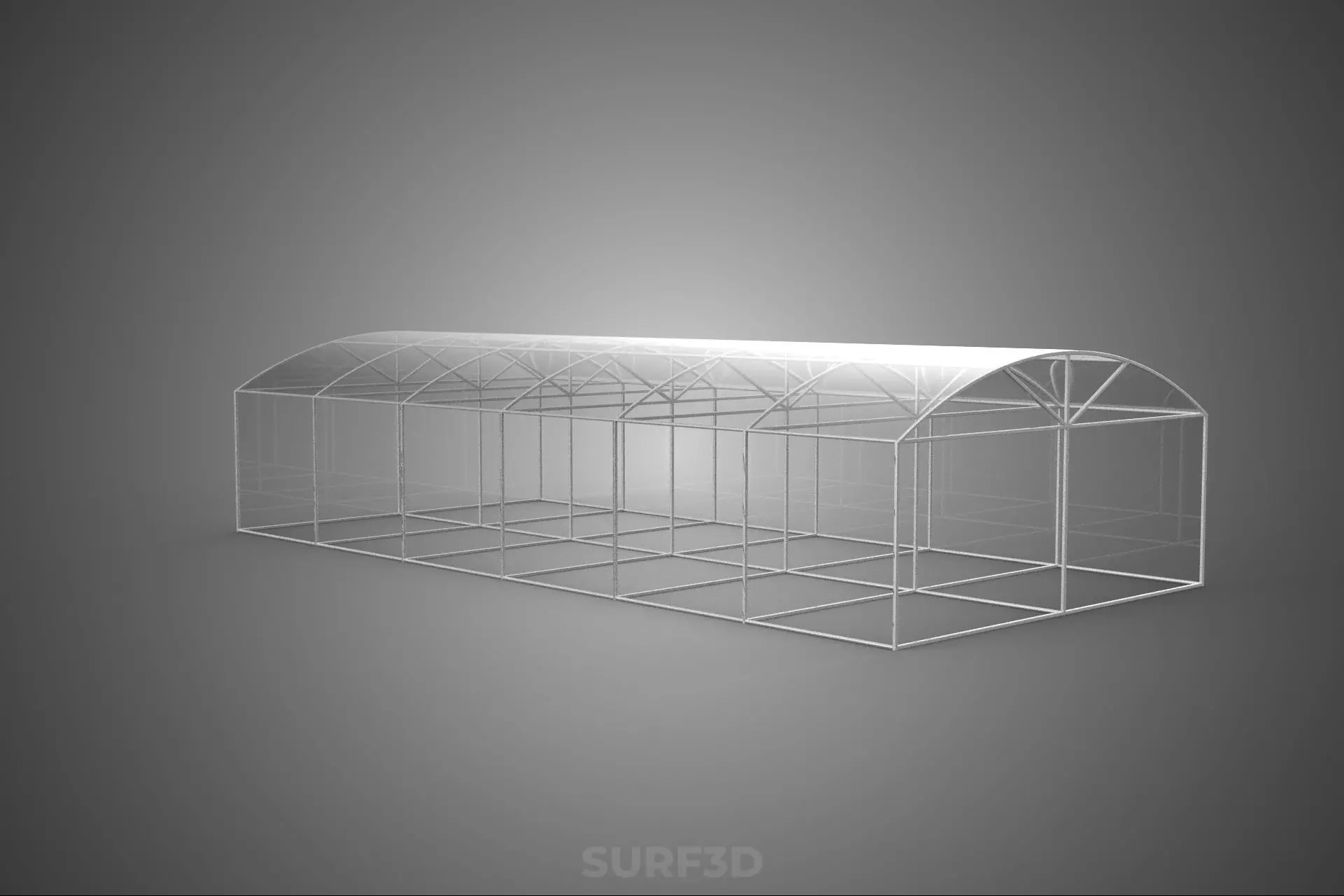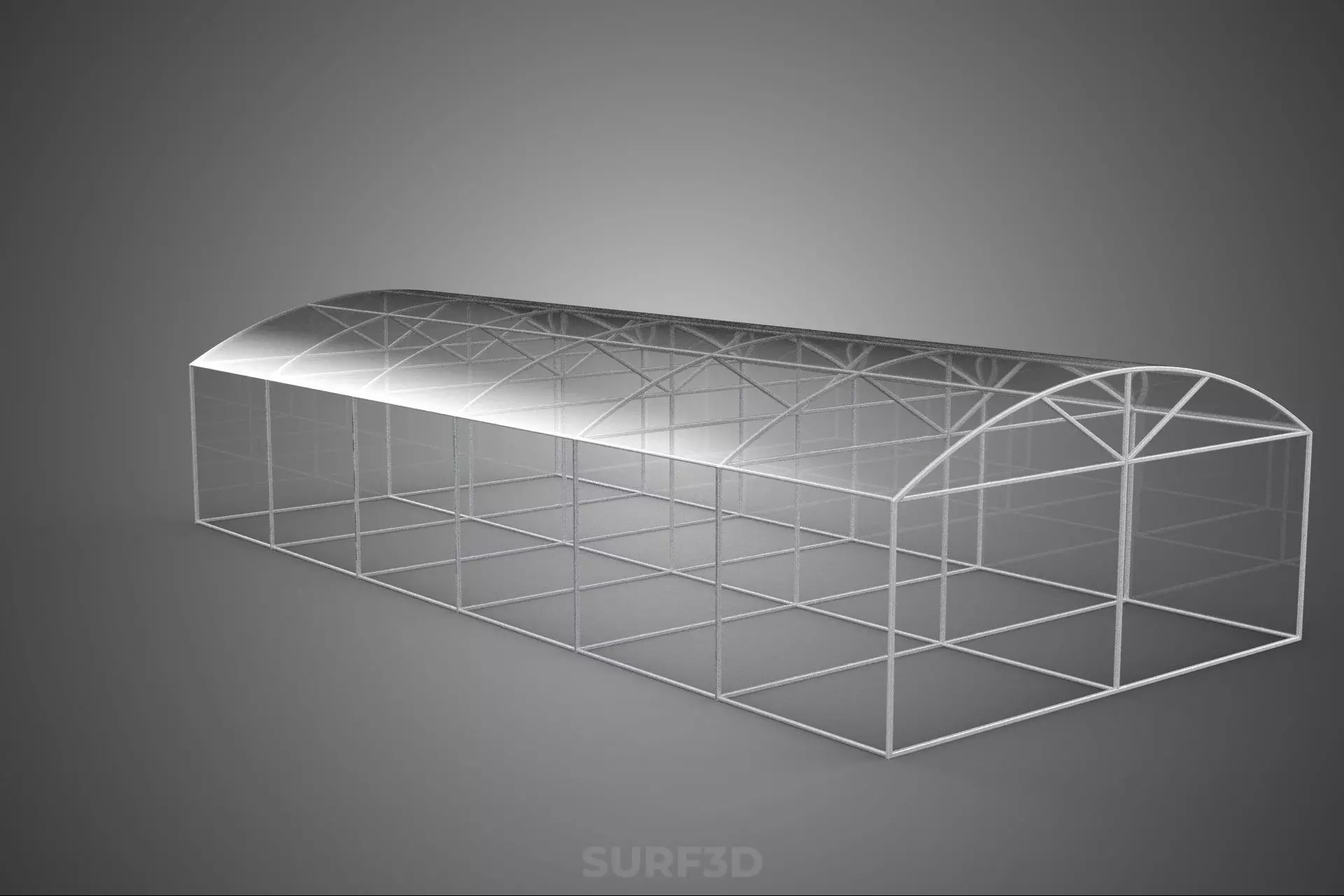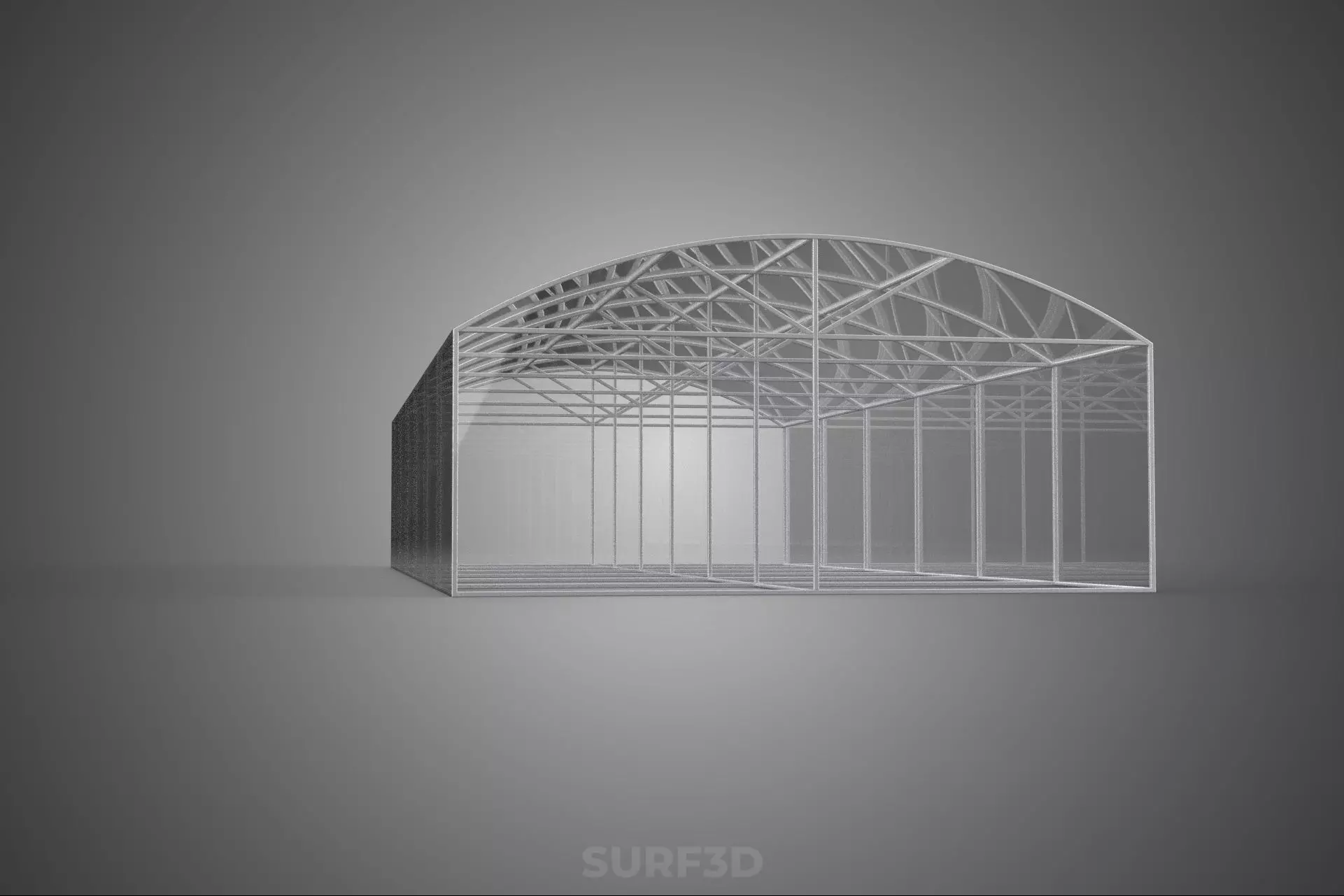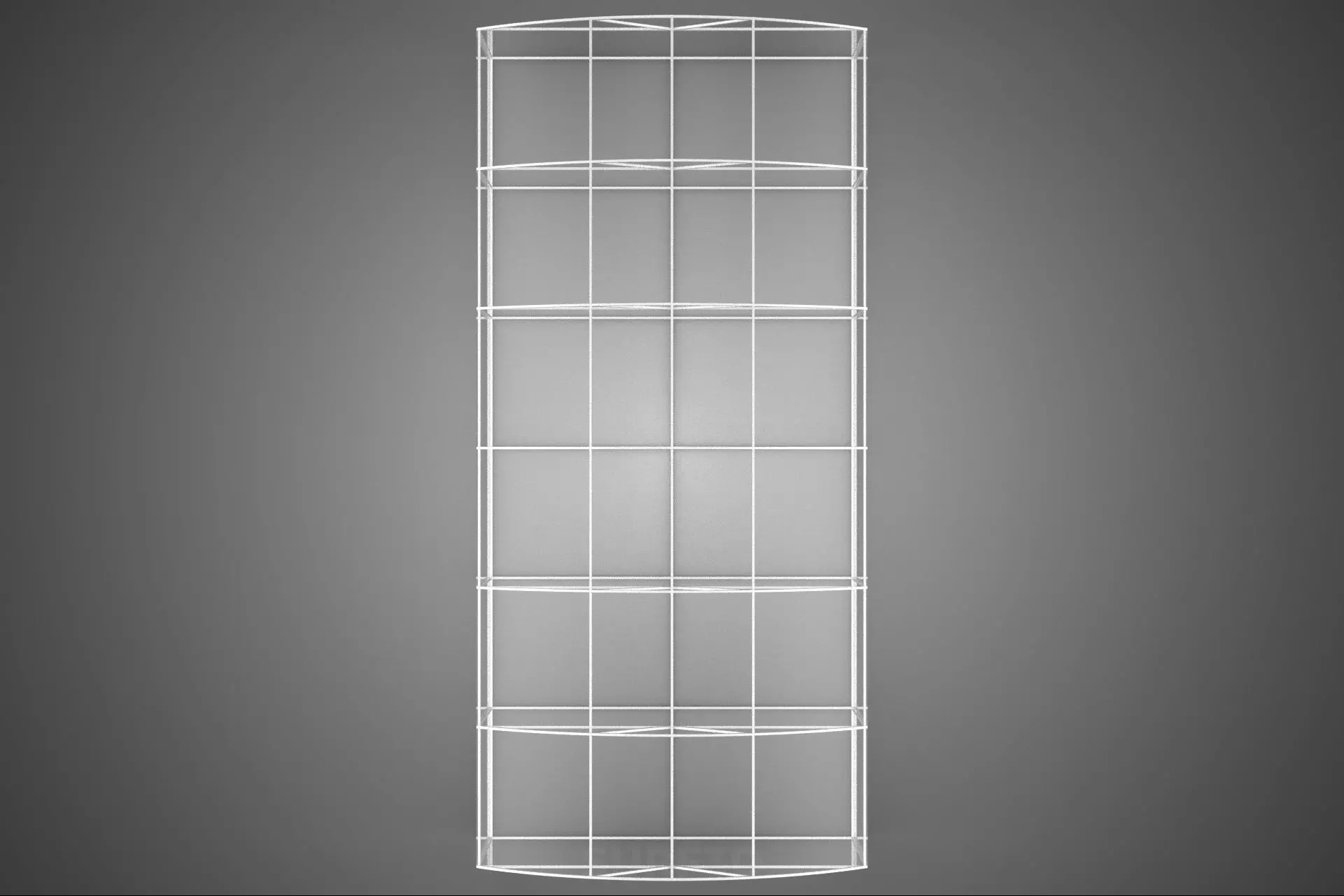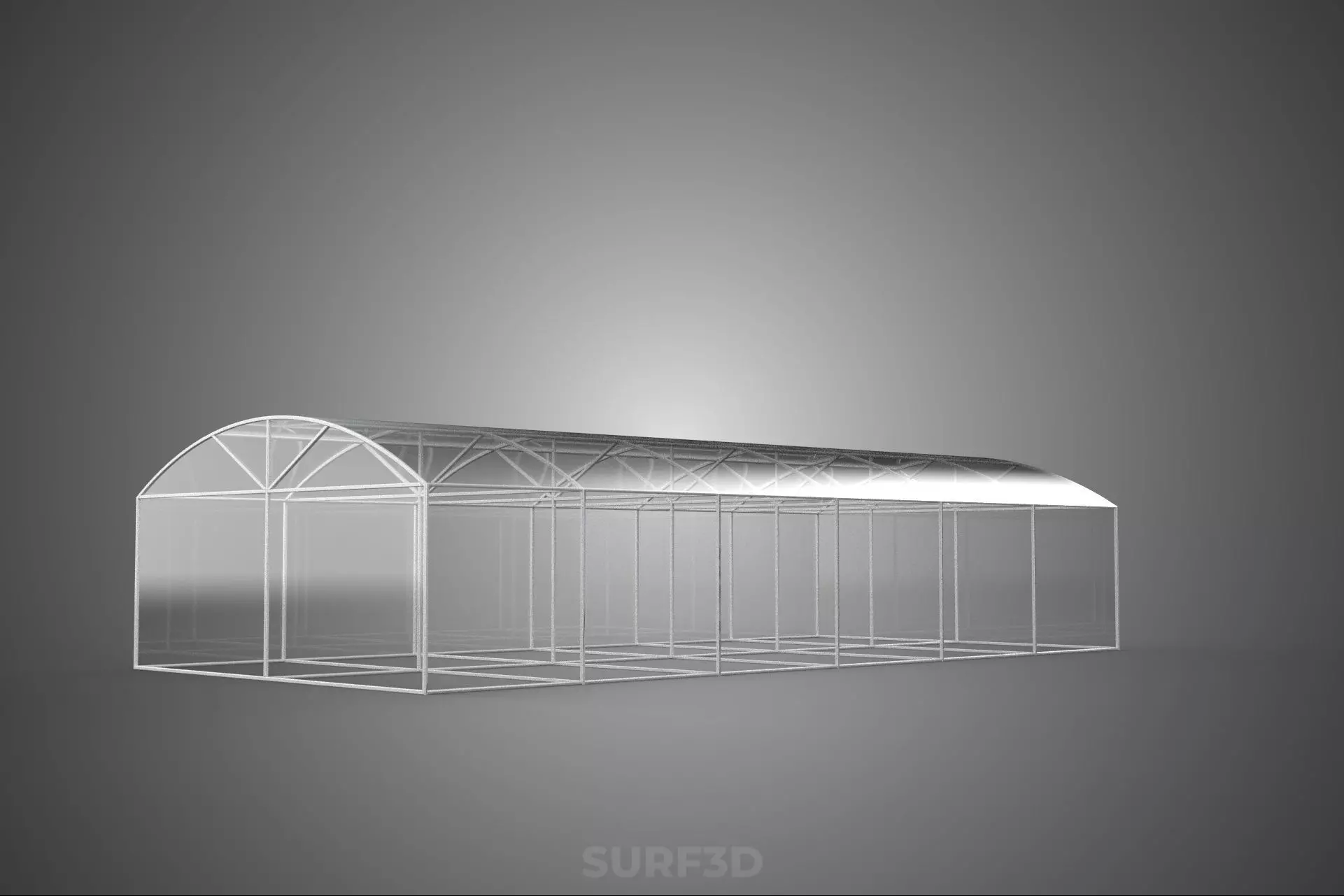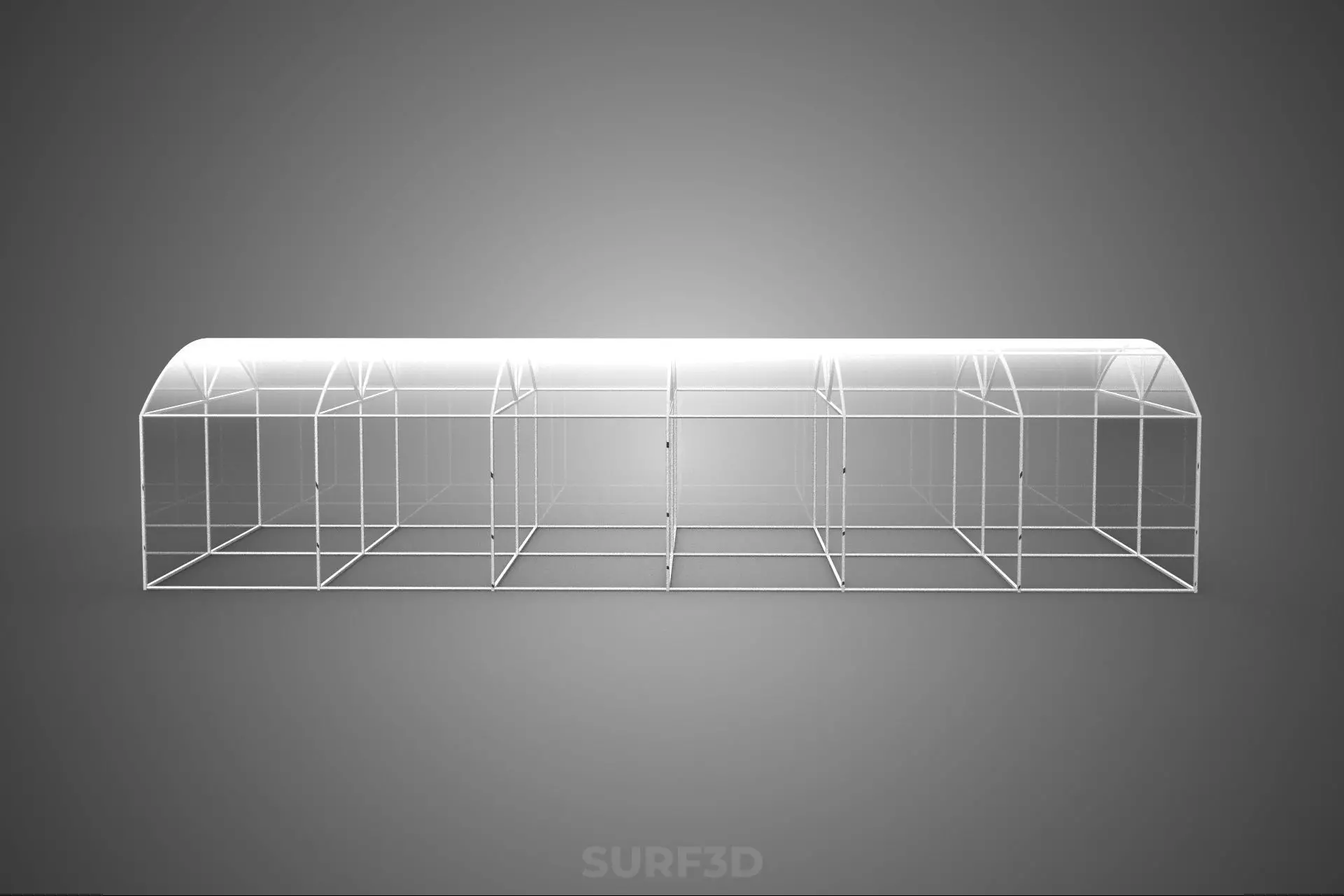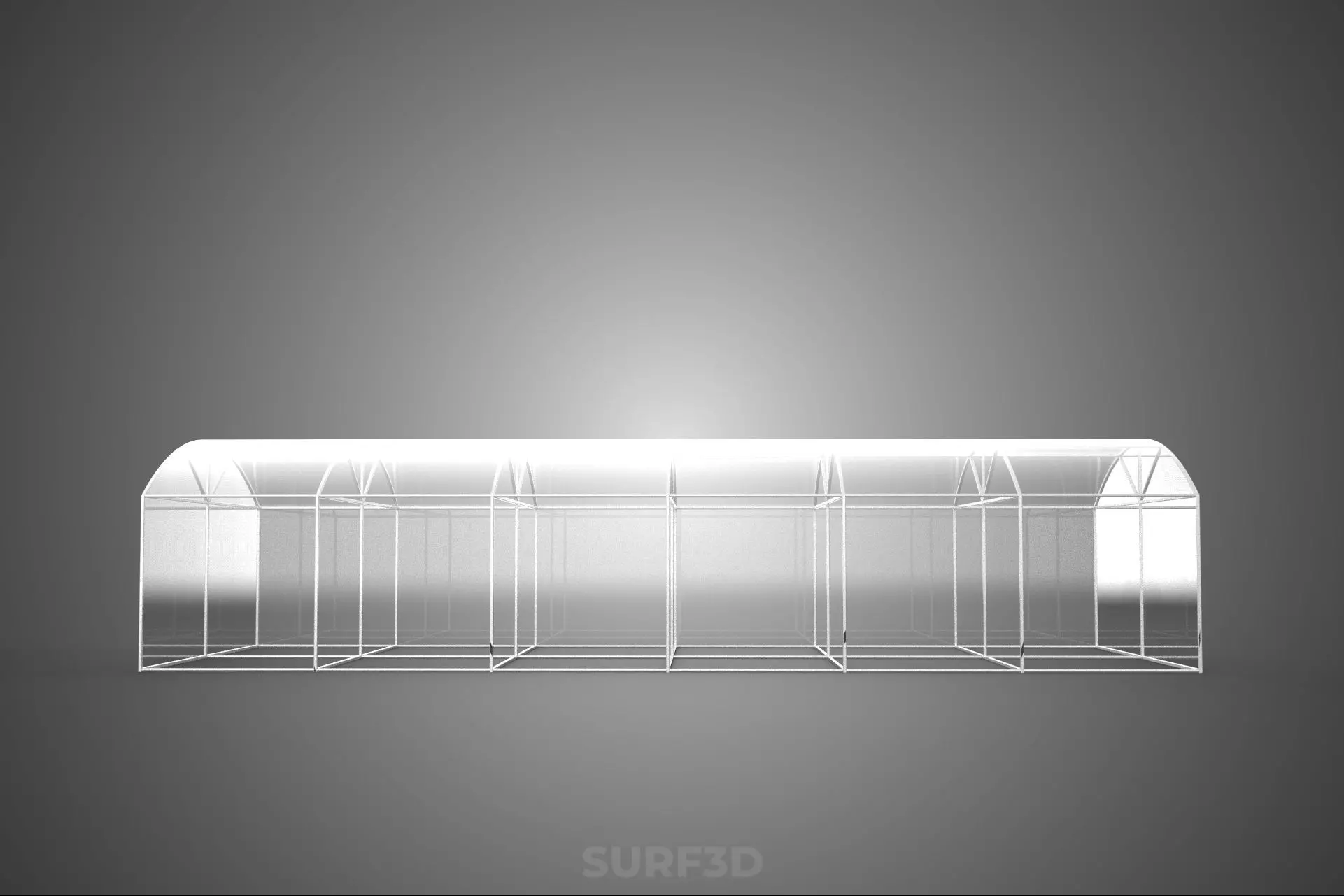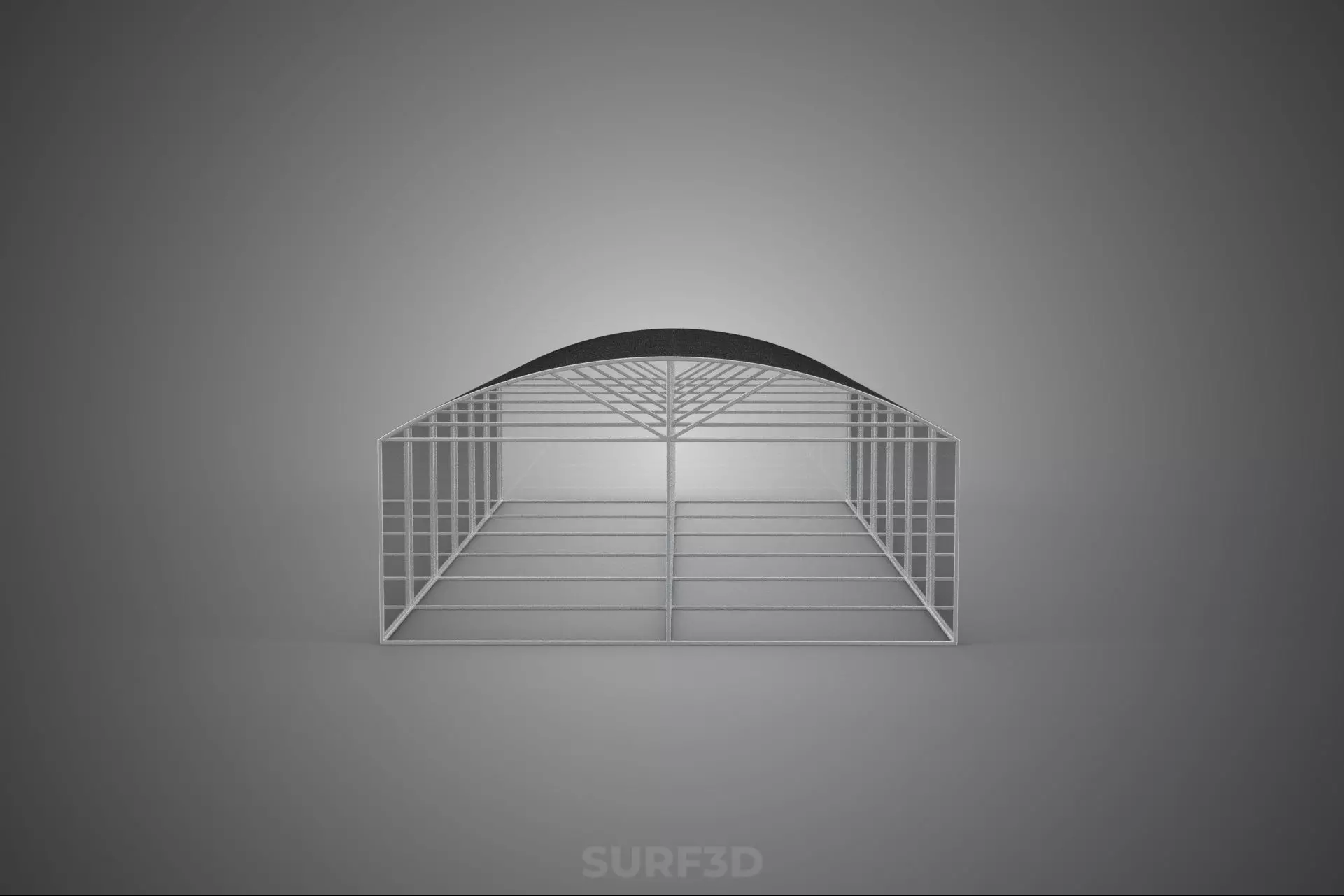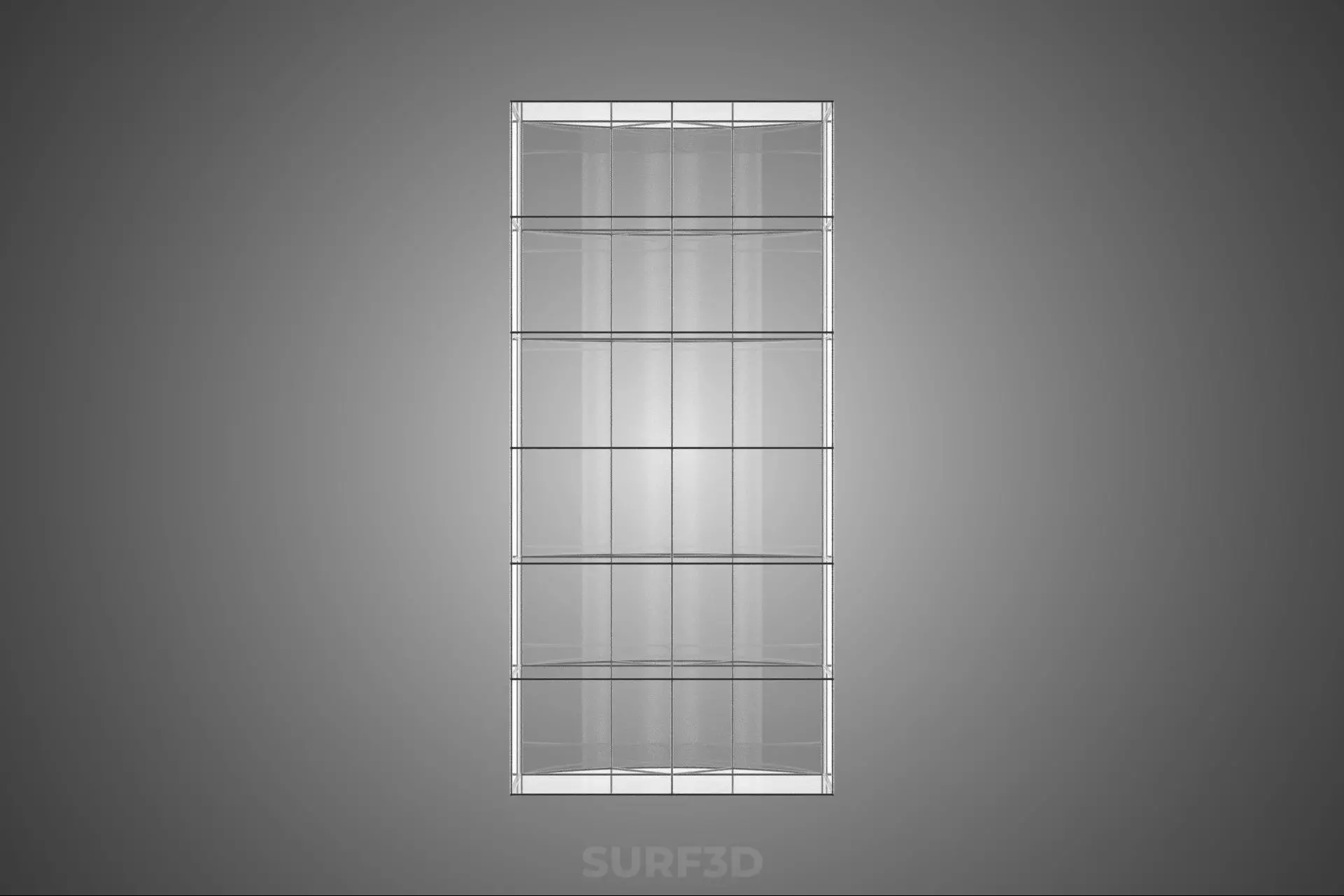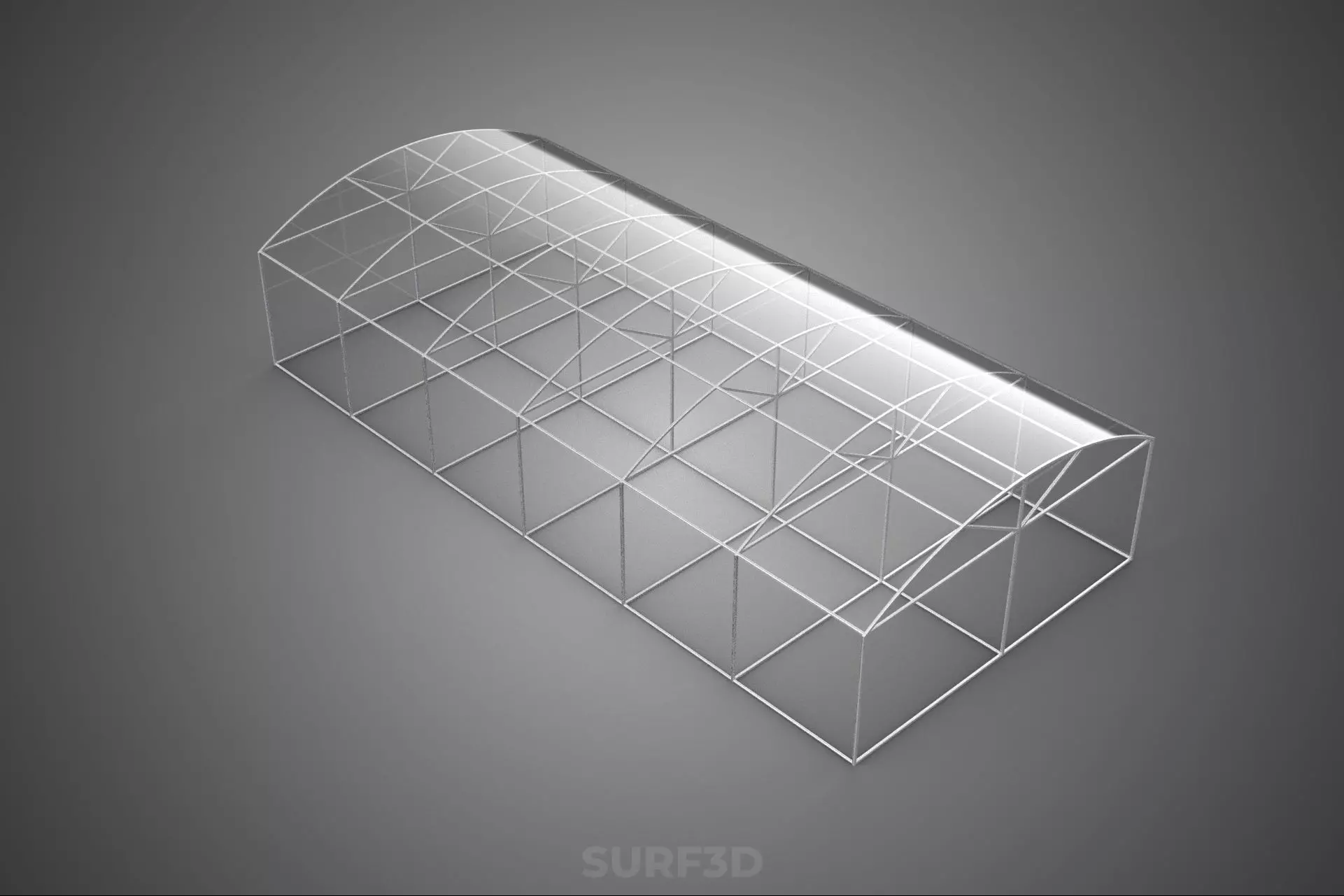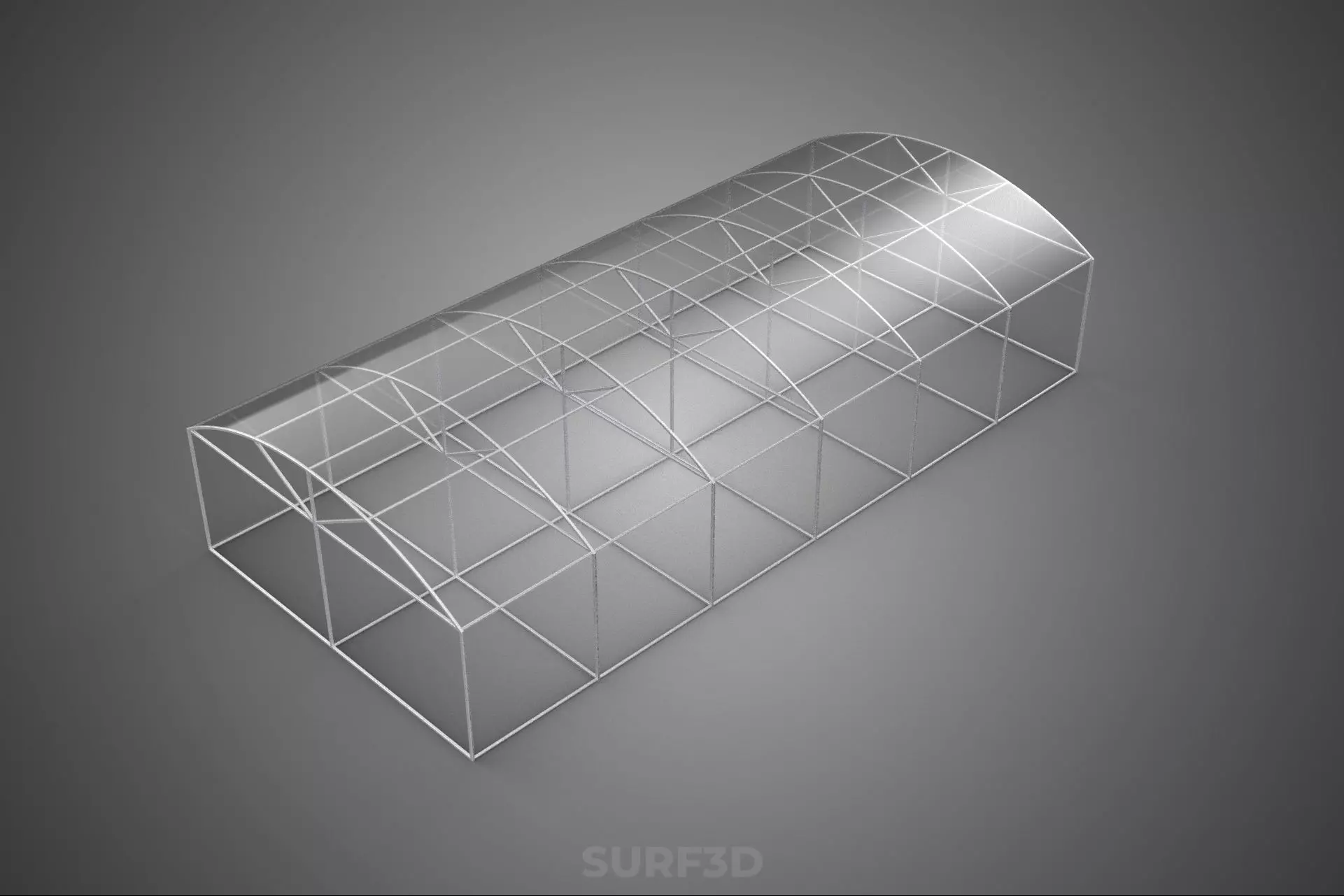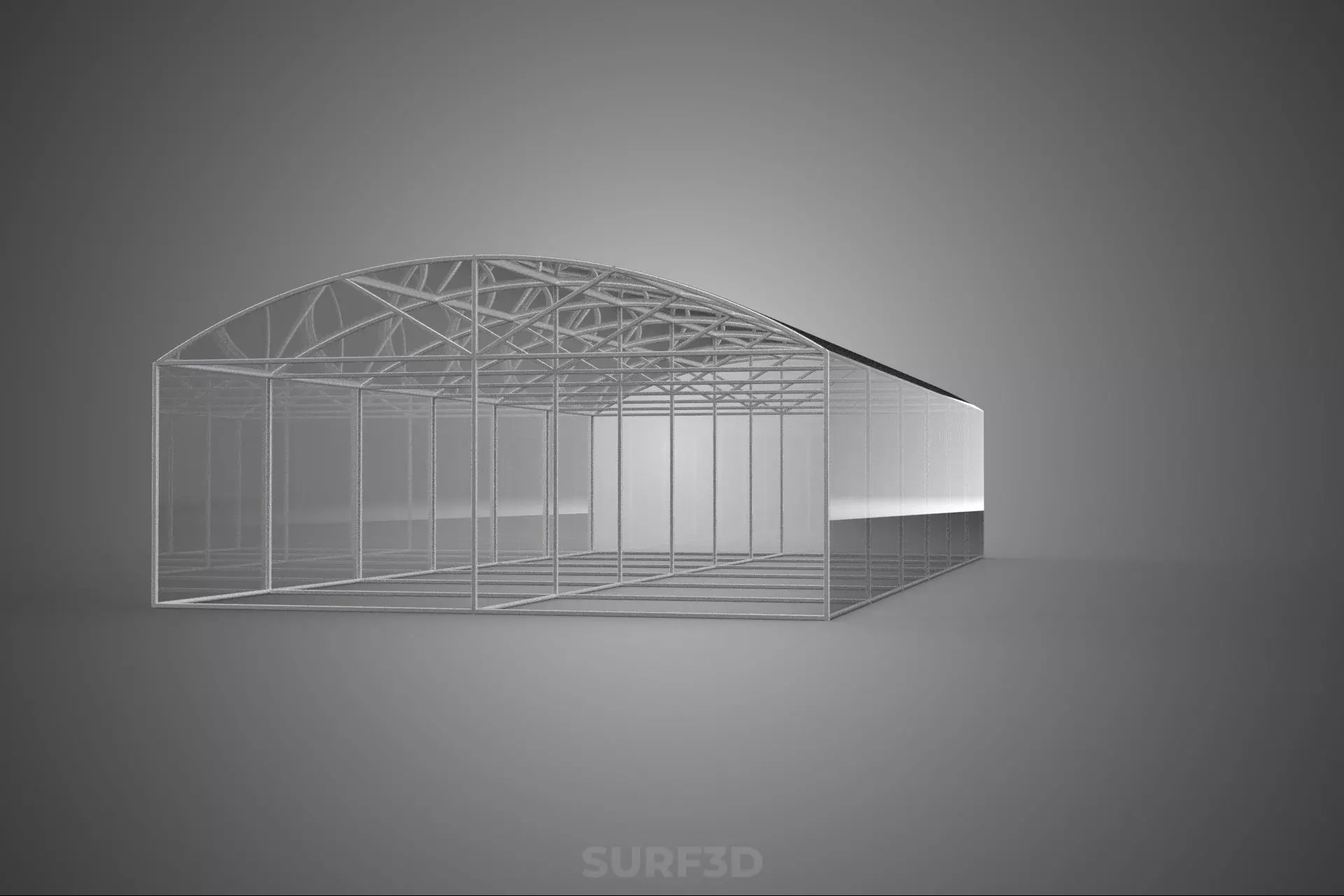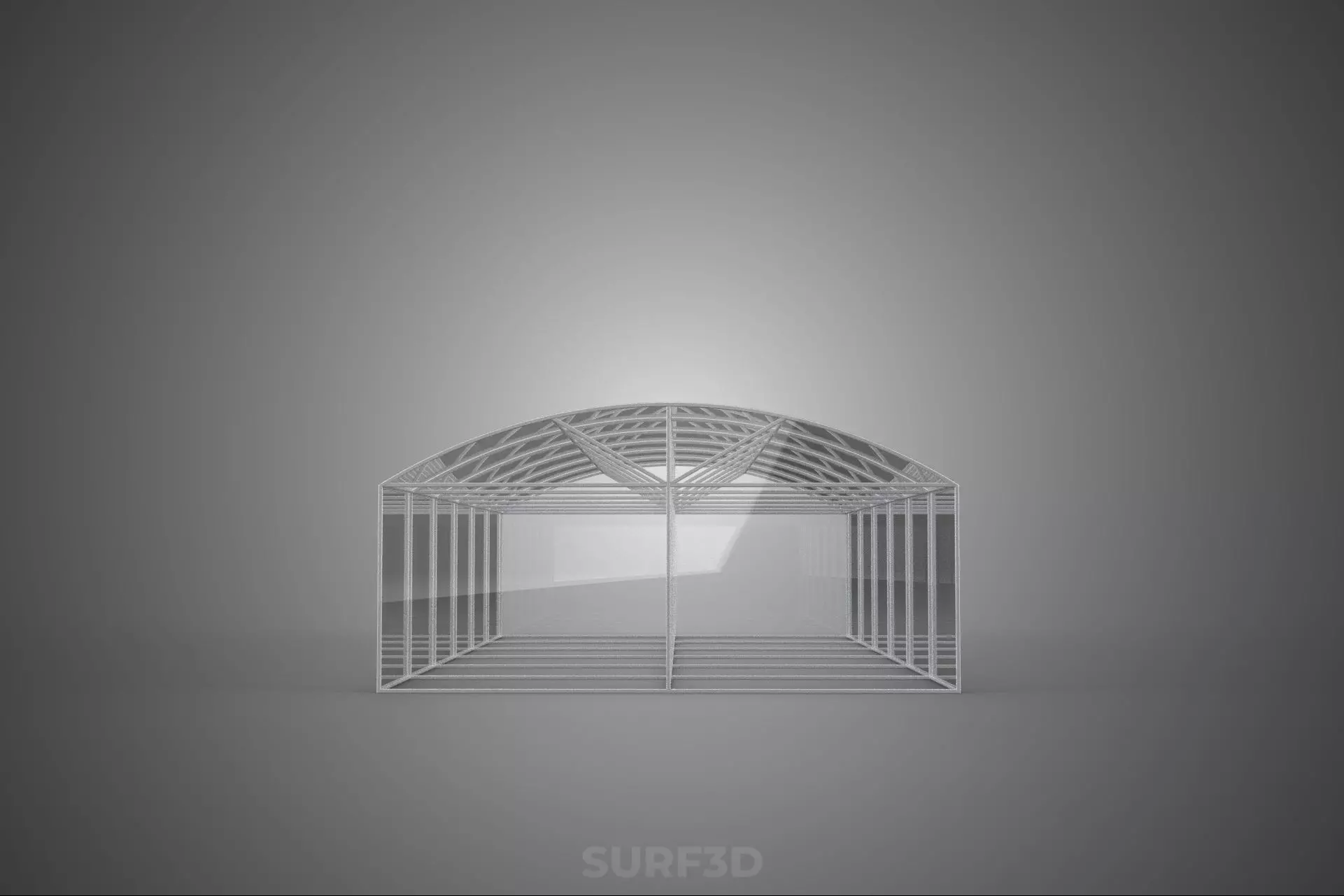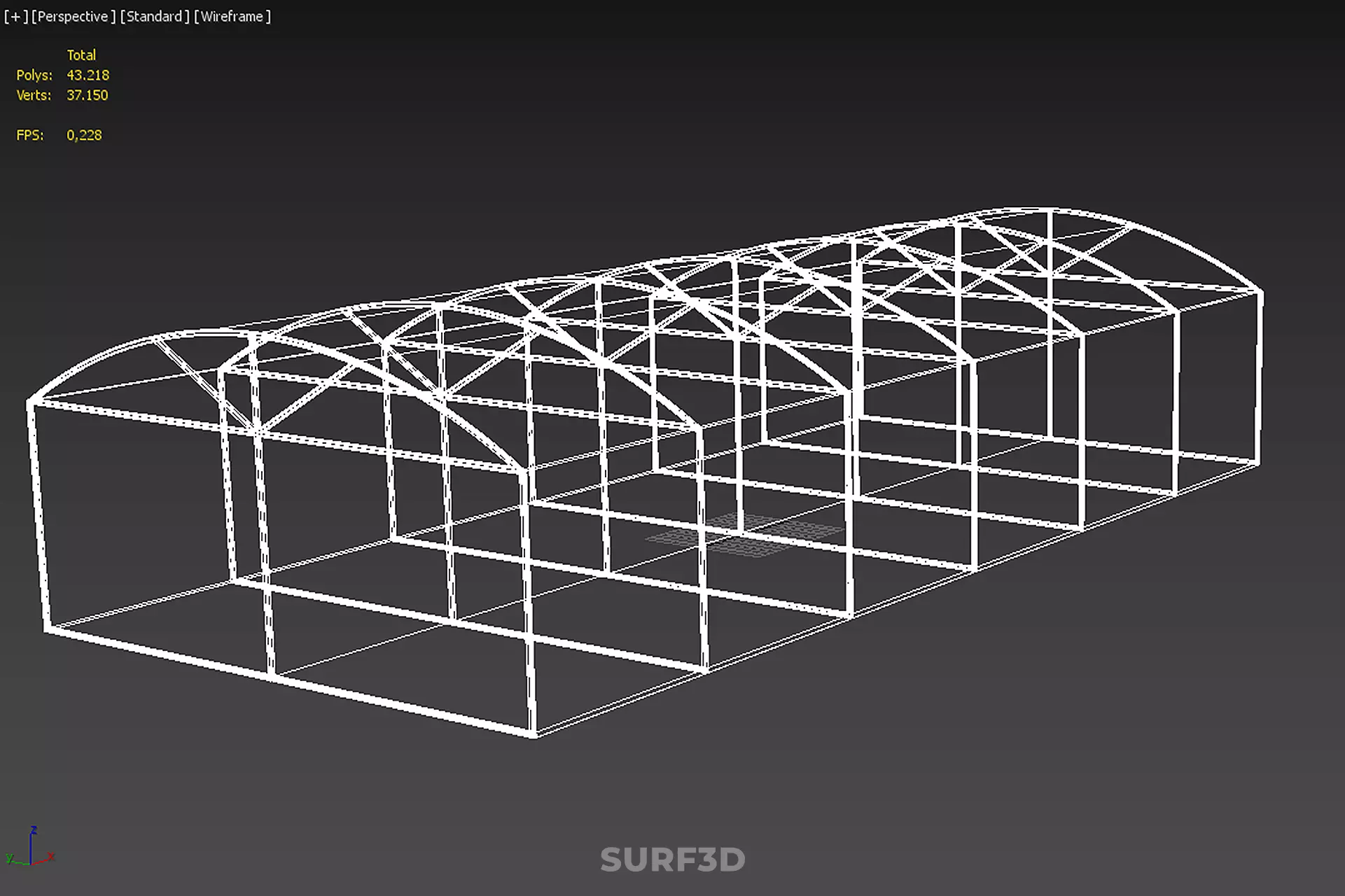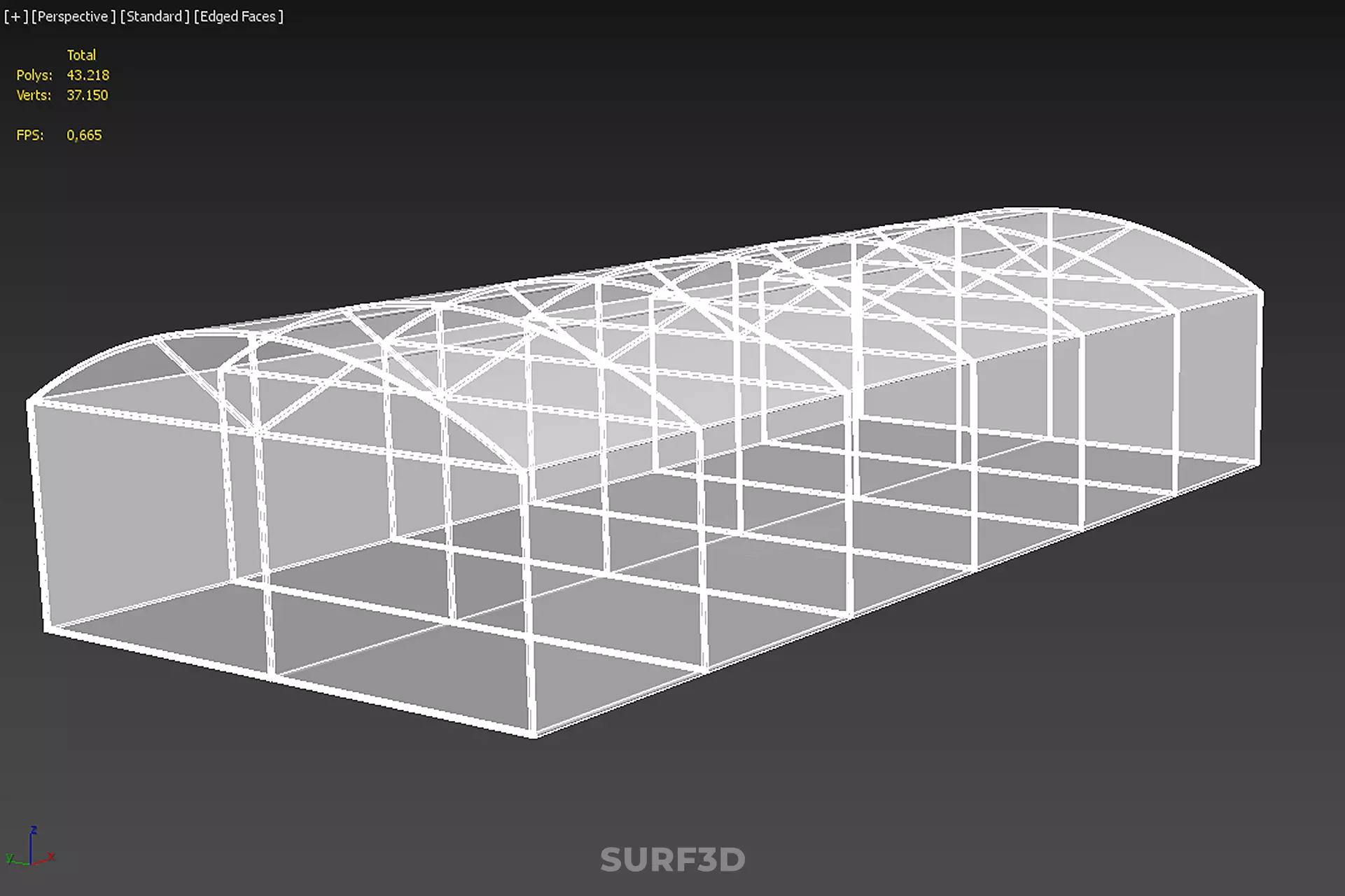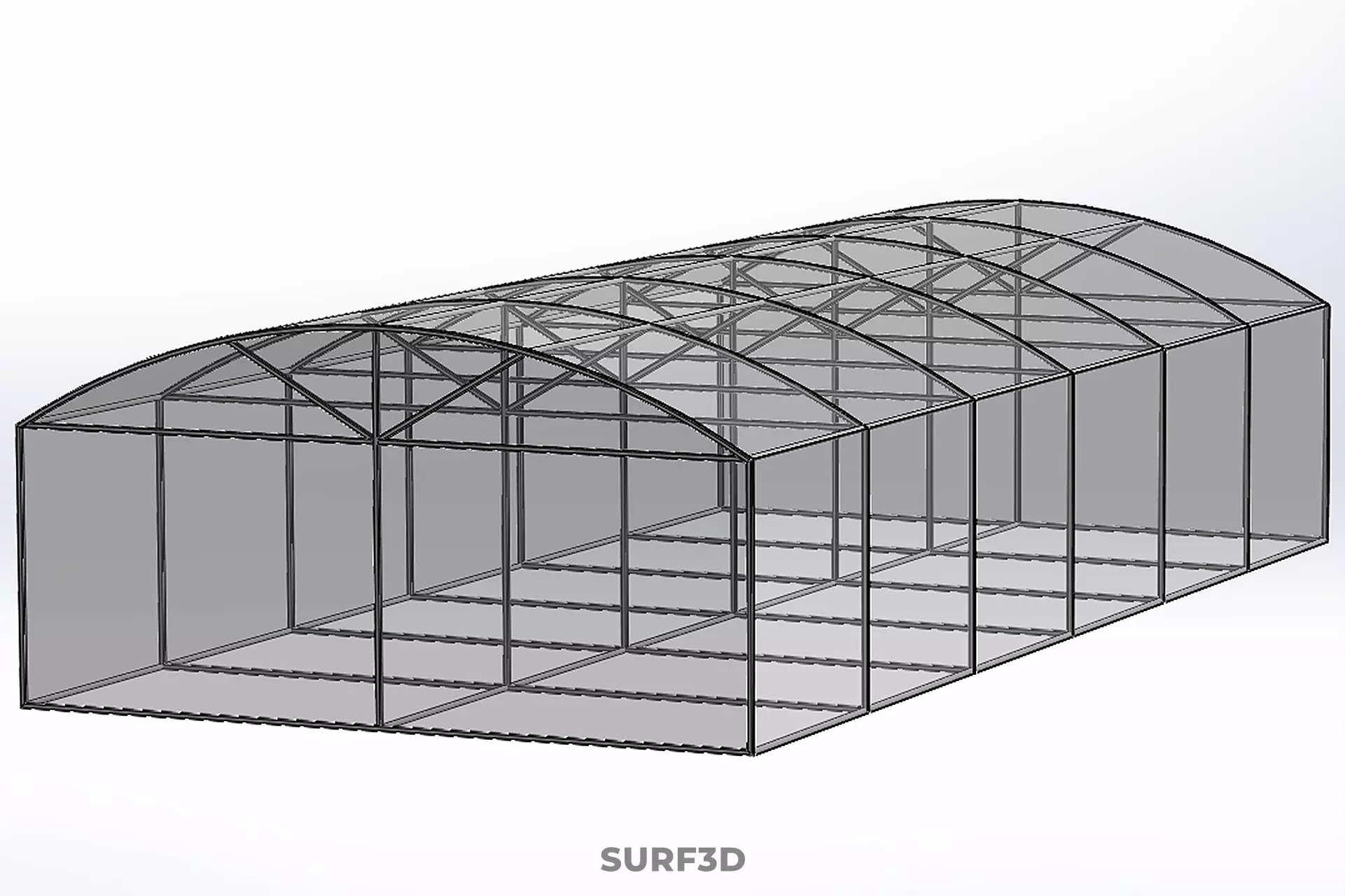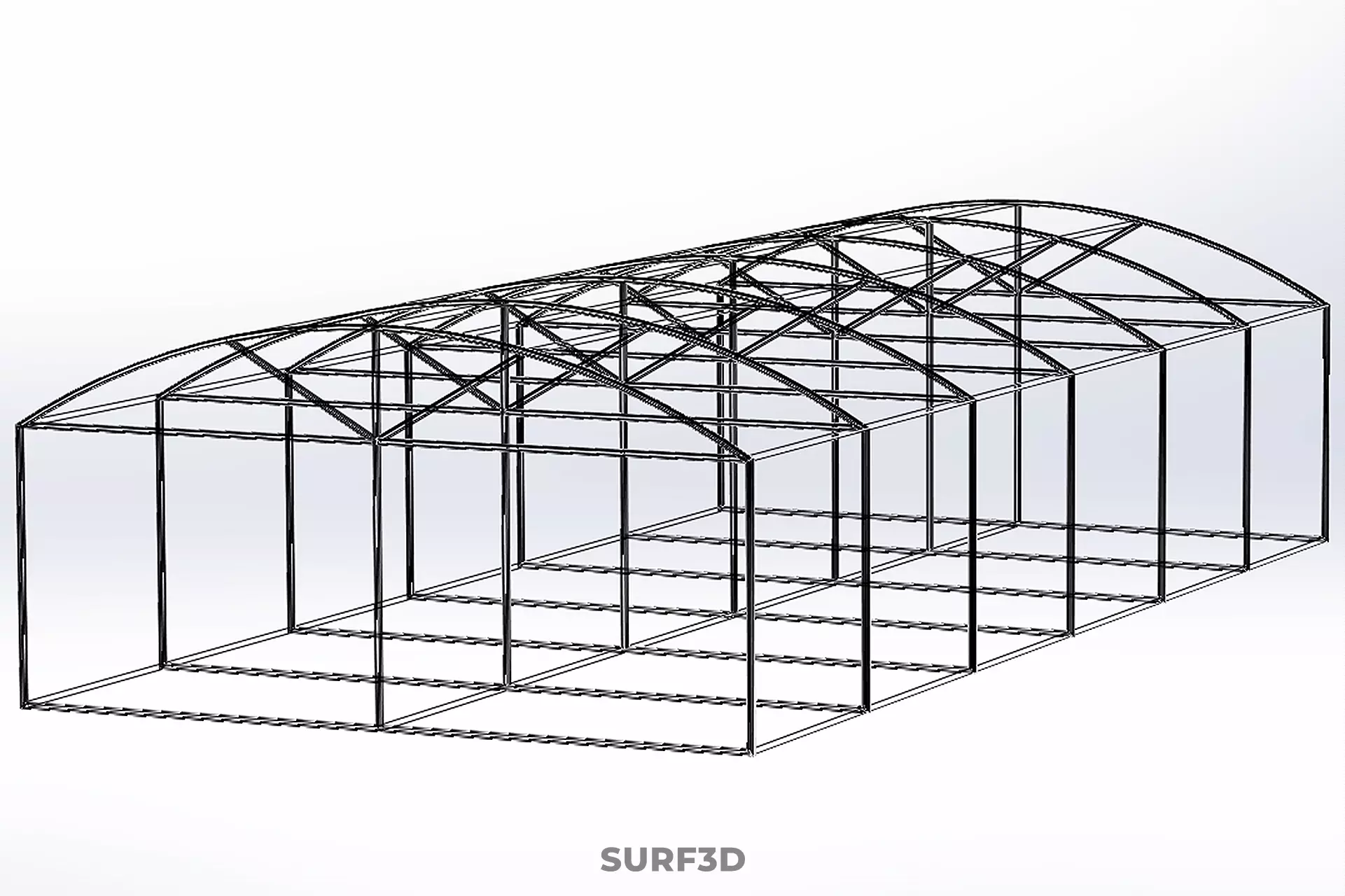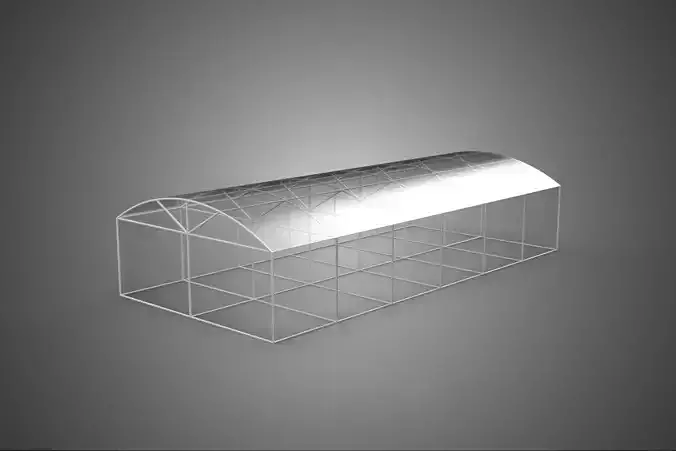
STRUCTURE CURVED GREENHOUSE HOTHOUSE GLASSHOUSE FRAME PLANT FARM 3D model
High-quality 3D assets at affordable prices — trusted by designers, engineers, and creators worldwide. Made with care to be versatile, accessible, and ready for your pipeline.
Included File Formats
This model is provided in 14 widely supported formats, ensuring maximum compatibility:
• - FBX (.fbx) – Standard format for most 3D software and pipelines
• - OBJ + MTL (.obj, .mtl) – Wavefront format, widely used and compatible
• - STL (.stl) – Exported mesh geometry; may be suitable for 3D printing with adjustments
• - STEP (.step, .stp) – CAD format using NURBS surfaces
• - IGES (.iges, .igs) – Common format for CAD/CAM and engineering workflows (NURBS)
• - SAT (.sat) – ACIS solid model format (NURBS)
• - DAE (.dae) – Collada format for 3D applications and animations
• - glTF (.glb) – Modern, lightweight format for web, AR, and real-time engines
• - 3DS (.3ds) – Legacy format with broad software support
• - 3ds Max (.max) – Provided for 3ds Max users
• - Blender (.blend) – Provided for Blender users
• - SketchUp (.skp) – Compatible with all SketchUp versions
• - AutoCAD (.dwg) – Suitable for technical and architectural workflows
• - Rhino (.3dm) – Provided for Rhino users
Model Info
• - All files are checked and tested for integrity and correct content
• - Geometry uses real-world scale; model resolution varies depending on the product (high or low poly)
• • - Scene setup and mesh structure may vary depending on model complexity
• - Rendered using Luxion KeyShot
• - Affordable price with professional detailing
Buy with confidence. Quality and compatibility guaranteed.
If you have any questions about the file formats, feel free to send us a message — we're happy to assist you!
Sincerely,
SURF3D
Trusted source for professional and affordable 3D models.
More Information About 3D Model :
A curved structure greenhouse, often referred to synonymously as a hothouse or glasshouse, is an advanced horticultural facility engineered specifically for controlled environment agriculture (CEA) on a commercial scale, functioning as a specialized plant farm. Distinguishing itself from traditional angular glass structures (such as Venlo or ridge-and-furrow designs), the defining characteristic of this structure is its continuous, non-rectilinear framing, typically employing semi-cylindrical, parabolic, or Gothic arch geometries.
The utilization of a curved frame imparts several significant advantages related to structural efficacy and operational performance.
Structural Integrity: Curved designs, particularly those approximating a catenary or parabolic arch (such as the widespread Quonset style), exhibit superior load-bearing capacity and inherent structural stability. This geometry effectively distributes static loads (such as the weight of the structure and internal systems) and dynamic loads (specifically snow and wind uplift) across the entire frame, minimizing stress points common in angled joints. This makes the curved design exceptionally suitable for regions prone to heavy snowfall or high winds.
Light Transmission: The continuous, flowing lines of the curved glazing surface often optimize the transmission of solar radiation, especially during the early morning and late afternoon hours when the sun angle is low. While some internal reflection occurs at the apex, the overall design aims to maximize diffuse light penetration, which is beneficial for plant canopy development and photosynthesis efficiency across large cultivation areas.
Material Efficiency: Curved structures frequently utilize fewer highly specialized connection components compared to traditional post-and-truss systems. They often rely on standardized, bent piping or extruded profiles (such as galvanized steel or aluminum), leading to efficient material usage and reduced construction complexity for large, scalable operations.
The frame of a commercial curved glasshouse is typically constructed from high-tensile galvanized steel, structural aluminum alloys, or, for lower-cost temporary structures, heavy-gauge poly-vinyl chloride (PVC).
Glazing: Due to the curved profile, flexible or easily formed glazing materials are dominant.
- Polyethylene (PE) Film: The most common covering for large-scale, semi-permanent curved structures (often termed hoop houses). PE film offers good light transmission and thermal retention, though its lifespan is shorter than rigid materials.
- Polycarbonate Sheets: Multi-wall or corrugated polycarbonate panels are lightweight, highly impact-resistant, and offer superior thermal insulation (R-value) compared to single-pane glass. They are often thermoformed or cold-bent to conform to the curved frame.
- Specialized Curved Glass: Less common due to cost, specialized glass panels can be thermally treated and bent (slumped) to fit complex curved profiles, providing maximum clarity and longevity, primarily utilized in high-end research or botanical facilities (true glasshouses).
### Functionality as a Hothouse and Plant Farm
The terminology hothouse specifies a facility dedicated to maintaining elevated temperatures and humidity regimes suitable for high-value crops (e.g., tropical ornamentals, specific vegetable varieties, or propagation material) that require temperatures significantly above the ambient exterior climate. As a plant farm, the structure incorporates sophisticated environmental control systems essential for intensive, commercial cultivation:
- Thermal Regulation: Heating systems (e.g., hydronic tube rails, forced air heaters) and cooling mechanisms (e.g., evaporative cooling pads, fog systems) are integrated. The curved structure aids in thermal regulation by reducing internal corners where cold spots may form and, when coupled with double-layer glazing, improves thermal retention.
- Ventilation: Automated ridge vents (if applicable) and side wall roll-up systems are critical for managing internal humidity and temperature stratification. The smooth, curved interior surfaces can facilitate smoother airflow compared to highly trussed angular buildings.
- Irrigation and Nutrition: Commercial operations necessitate automated drip irrigation systems, nutrient film technique (NFT), or deep water culture (DWC), often managed by centralized fertigation systems.
- Light Augmentation: Supplementary high-intensity discharge (HID) or light-emitting diode (LED) fixtures are frequently installed to ensure optimal photosynthetic photon flux density (PPFD), especially during winter months or for high-density vertical farming racks within the primary structure.
These structures represent a vital component of modern protected agriculture, enabling year-round production, improved resource efficiency, and localized food security by decoupling crop viability from local climate variables.
KEYWORDS: Greenhouse, Hothouse, Glasshouse, Curved Structure, Controlled Environment Agriculture, CEA, Commercial Horticulture, Plant Farm, Quonset Hut, Parabolic Arch, Structural Stability, Load Bearing, Polycarbonate Glazing, Polyethylene Film, Thermal Regulation, Environmental Control, Light Transmission, Structural Integrity, Hydroponics, Intensive Cultivation, Crop Yield, High-Value Crops, Galvanized Steel Frame, Semi-Cylindrical, Forced Ventilation, Evaporative Cooling, Automated Systems, Protected Agriculture, Hoop House, Renewable Energy.

